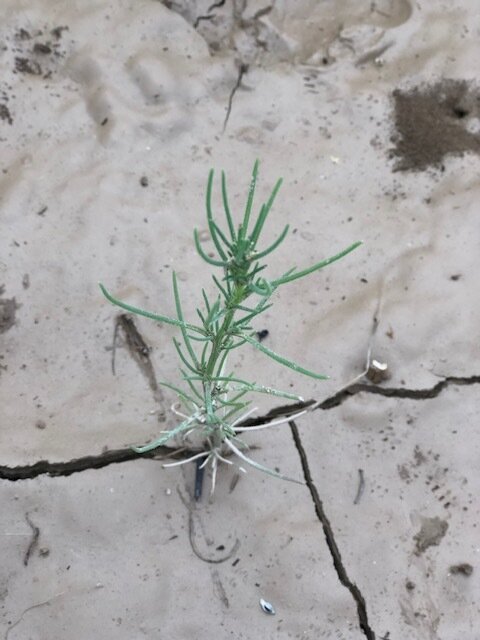Small but Mighty
Photo credit: Elizabeth Mattis Namgyel
I was out on a walk early this morning, admiring the late summer blooms. This year we had more rain than usual. It has been wet. But even in our greenest moments, the plants that grow here are small iterations of what they may have grown to in a lush or even moderate climate. The existence of these small plants give us high desert dwellers something to boast about.
If you plant a garden in a high desert you have to spend your summer guarding each and every seedling, watering them several times a day and praying that the ground will yield something for your efforts. Even when it does, bears usually get your apples before you can pick them and the birds and deer always get at the lettuce. This year I let myself off the hook and have graciously accepted lettuce from my hard core gardening friends, or bought my veggies at the store.
But all that garden info was a divergence. Let’s get back to my morning walk. This morning I found myself observing the small but insistent waxy little plants that push their way out of the cracked clay earth. These plants always speak to me. These small but mighty manifestations of life and energy remind me that being alive takes a bit of toughness . The gentle pretty flowers these plants may yield, couldn’t pop open without the tenacity and hubris it takes to put down roots and reach for the sun.
I bring all this up with a purpose. A friend recently asked me about the difference between fierceness and aggression. Not so long ago in some public talks I gave, I suggested we bring fierceness to our bodhisattva path and activity. I also pointed out that many of the sacred images we have in our spiritual centers consist of wrathful deities, surrounded by fire, sometimes holding weapons. What do you think those weapons are for? I put that out as an inquiry for you to contemplate.
To me the verve of these waxy little plants reaching towards the sun I speak of, are analogous to the might that is needed to face the profound truth, to accept impermanence and death, to work against the stream of our habitual mind, and to make ourselves big enough to accommodate life as it unfolds for us. Sometimes it seems that in our spiritual seeking we associate practice only with gentleness, peacefulness and softness. But as Dzigar Kongtrul Rinpoche has said, “The bodhisattva path is not about feeling peaceful, it is about being awake.”
Strong energy doesn't necessarily define aggression. Anger can express itself as physical or emotional violence, but it can also present itself as “passive” aggression or avoidance, and hidden resentment. Fierceness often accompanies compassion, creativity and confidence and can uphold strong supportive boundaries. One finds fierceness in deep respect. Fierceness, in the context of the path, means you have made up your mind and that you have decided to move ahead with your bodhisattva vow - spiritual inspiration is fierce in its forward moving energy.
I have said a lot about the value of fierceness here. I brought this all up because I think we shouldn’t be afraid of it. I find it a necessary resource for life and practice. But what I say is of little consequence if you haven’t done this investigation for yourself. How would you distinguish aggression from fierceness? Can you be fierce and loving at the same time? Why is fierceness part of the skillful means in our tradition? I guess this is now your mystery to unravel.

